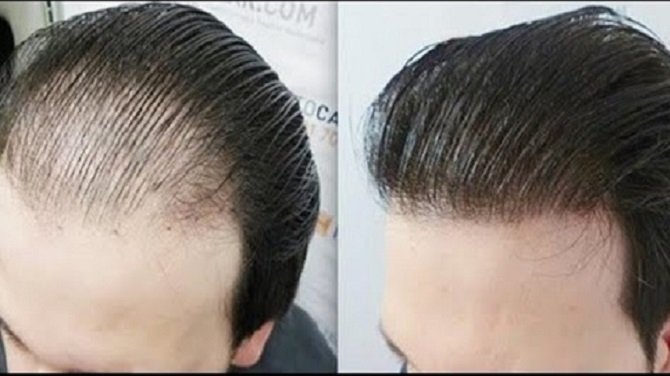Trauma can feel like a never-ending cycle, affecting your emotions, thoughts, and daily life. If you’re struggling with PTSD, anxiety, or painful past experiences, EMDR treatment in CA could be the breakthrough therapy you need. This evidence-based approach has been transforming lives by helping individuals reprocess traumatic memories, reduce emotional distress, and regain control over their mental health.
EMDR (Eye Movement Desensitization and Reprocessing) therapy has gained significant popularity in California due to its effectiveness in treating post-traumatic stress disorder (PTSD), anxiety, and other trauma-related disorders. Many people seek out EMDR in California because of the state’s top-tier mental health professionals and progressive approach to trauma therapy.
In this blog, we’ll explore:
- What EMDR therapy is
- How it works
- Its benefits
- Who can benefit from EMDR
- What to expect during a session
- Why California is a top location for EMDR treatment
- How to find the best EMDR treatment in CA
What is EMDR Therapy?
Eye Movement Desensitization and Reprocessing (EMDR) is a psychotherapy technique that helps individuals process distressing memories. Unlike traditional talk therapy, EMDR uses bilateral stimulation—such as guided eye movements, taps, or sounds—to help the brain reprocess traumatic memories and reduce their emotional intensity.
Developed by Dr. Francine Shapiro in the late 1980s, EMDR is now recognized by mental health organizations worldwide, including:
- The American Psychological Association (APA)
- The World Health Organization (WHO)
- The U.S. Department of Veterans Affairs (VA)
Unlike traditional therapy, where individuals may need to talk extensively about their trauma, EMDR allows patients to process these memories without detailed discussion, making it a unique and effective treatment option.
How Does EMDR Treatment in CA Work?
EMDR therapy follows an eight-phase protocol to ensure safe and effective trauma processing:
1. History Taking & Treatment Planning
The therapist gathers information about the client’s past experiences, identifying specific traumatic memories that need to be processed.
2. Preparation
The therapist teaches the client grounding techniques, relaxation methods, and coping skills to manage emotional distress.
3. Assessment
The specific traumatic memory is targeted. The client is asked to recall distressing memories and identify the negative beliefs associated with them.
4. Desensitization
This phase involves bilateral stimulation, such as eye movements, hand taps, or audio tones, while the client focuses on the traumatic memory. This process helps the brain reprocess the event, making it feel less distressing.
5. Installation
The therapist helps the client replace negative beliefs with positive, empowering thoughts.
6. Body Scan
The client assesses their physical response to ensure all residual distress is gone.
7. Closure
At the end of each session, the therapist helps the client return to a state of calm and balance.
8. Reevaluation
In follow-up sessions, the therapist checks if any further processing is needed.
Why is EMDR Treatment in CA So Effective?
California is home to many highly trained and licensed EMDR therapists who specialize in trauma therapy. The effectiveness of EMDR treatment in CA can be attributed to:
✔ Quick Results: Research shows that EMDR therapy can significantly reduce PTSD symptoms in fewer sessions than traditional therapy.
✔ Minimal Talk Therapy: Many people struggle to talk about traumatic experiences. EMDR allows healing without extensive verbalization.
✔ Scientific Backing: Studies show EMDR therapy is highly effective in reprocessing distressing memories.
✔ California’s Mental Health Focus: With access to cutting-edge treatments and leading therapists, CA is a prime location for EMDR therapy.
Who Can Benefit from EMDR Therapy?
EMDR therapy is primarily used to treat PTSD, but it is also effective for:
✅ Anxiety Disorders – EMDR helps reprocess anxious thoughts linked to past trauma.
✅ Depression – Many cases of depression stem from unresolved trauma, which EMDR can help address.
✅ Panic Attacks – EMDR helps reduce the severity and frequency of panic attacks.
✅ Phobias – By reprocessing distressing memories, EMDR can help ease intense phobias.
✅ Addiction Recovery – Trauma often plays a role in substance abuse; EMDR helps address the root causes.
✅ Sexual Assault Survivors – EMDR therapy has been effective in helping survivors heal from past abuse.
✅ Grief & Loss – EMDR can help process unresolved grief.
✅ First Responders & Veterans – Those who experience job-related trauma often benefit greatly from EMDR.
What to Expect in an EMDR Therapy Session
A typical EMDR session lasts 60-90 minutes. Sessions may vary based on individual progress, but a standard approach includes:
- Identifying distressing memories
- Using bilateral stimulation (eye movements, tapping, or sounds)
- Observing thoughts, emotions, and physical sensations
- Replacing negative beliefs with empowering thoughts
- Ensuring emotional stability before concluding
Unlike traditional therapy, where clients may spend months discussing traumatic events, EMDR therapy reprocesses trauma quickly, allowing clients to move forward in their healing journey.
Scientific Research on EMDR Therapy
Several scientific studies validate the effectiveness of EMDR therapy:
📌 A study published in the Journal of Clinical Psychology found that over 80% of trauma survivors experienced a reduction in PTSD symptoms after just a few sessions of EMDR.
📌 Research from the U.S. Department of Veterans Affairs confirms that EMDR therapy is one of the most effective treatments for PTSD.
📌 The National Institute for Health and Care Excellence (NICE) in the UK endorses EMDR therapy for trauma treatment.
These findings demonstrate that EMDR is not just a trend—it’s a proven treatment backed by scientific research.
Finding the Best EMDR Treatment in CA
If you’re looking for EMDR treatment in CA, here’s how to find a qualified therapist:
🔹 Check for EMDR Certification – Look for therapists accredited by the EMDR International Association (EMDRIA).
🔹 Read Client Reviews – Check testimonials to ensure quality care.
🔹 Verify Insurance Coverage – Many insurance plans cover EMDR therapy.
🔹 Ask About Specializations – Some therapists focus on specific trauma-related conditions.
🔹 Consider Teletherapy – Many California-based EMDR therapists offer online therapy sessions.
By choosing the right therapist, you can experience the full benefits of EMDR treatment in CA and take steps toward healing.
Final Thoughts: Is EMDR Right for You?
Trauma doesn’t have to control your life. EMDR therapy has changed the lives of thousands by helping them break free from the grip of past trauma. Whether you’re dealing with PTSD, anxiety, or painful memories, EMDR treatment in CA can be the key to lasting recovery.
If you’re ready to heal from the past and move forward with confidence, don’t wait—find an EMDR therapist in California today and start your journey to recovery!
















Leave a Reply